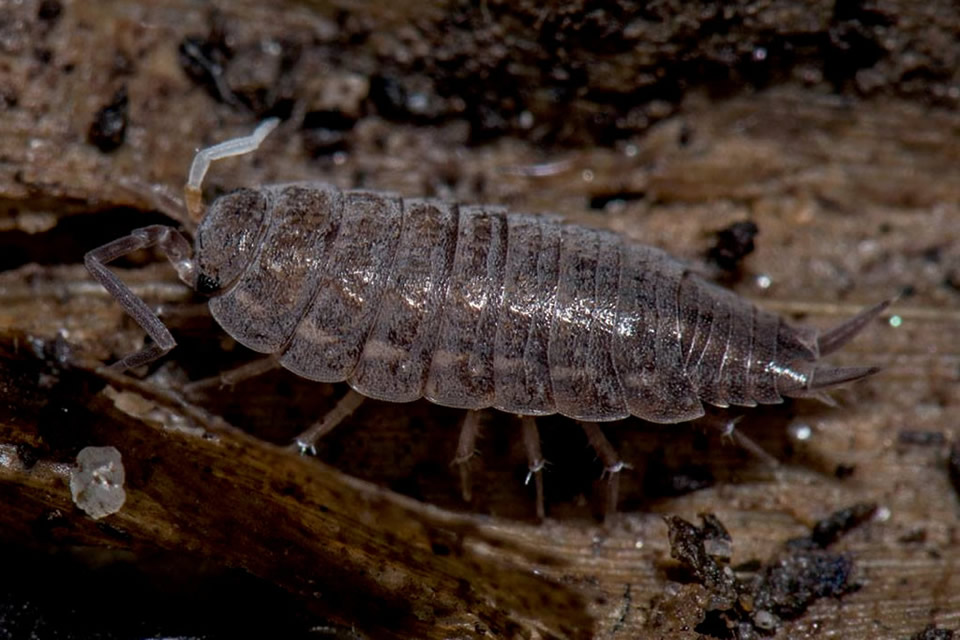Porcellionides sexfasciatus (Budde-Lund, 1885)
Synonyms
Status:
GB IUCN status: Not applicable (non-native)
ID Difficulty
Identification
Porcellionides sexfasciatus has a characteristic grey bloom (as seen in Porcellionides pruinosus) but the female bears a number of dark longitudinal dorsal stripes. The body has a stepped outline and it is capable of very rapid movement, the antennal flagella comprising two segments and with two pairs of pleopodal lungs.
A brief description, with figures, is provided by Gregory, Lugg & Harding-Morris (2021).
Distribution and Habitat
Porcellionides sexfasciatus is only known from Eden Project (Mediterranean Biome), Cornwall, where it was first found in 2018, but its identity was not confirmed until additional specimens were collected in 2020 (Gregory, Lugg & Harding-Morris, 2021).
At Eden Project specimens were found under loose stones in dry situations, with no other species of woodlouse present.
This woodlouse originates from the western Mediterranean, mainly in coastal habitats including the the Atlantic coast as far north as Brittany. However, it is not confined to the coast and has been widely spread by human activity into synanthropic habitats inland.
Links
World List of Marine, Freshwater and Terrestrial Isopod Crustaceans: https://www.marinespecies.org/isopoda/aphia.php?p=taxdetails&id=262551




